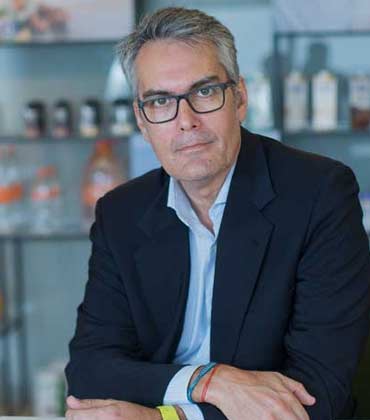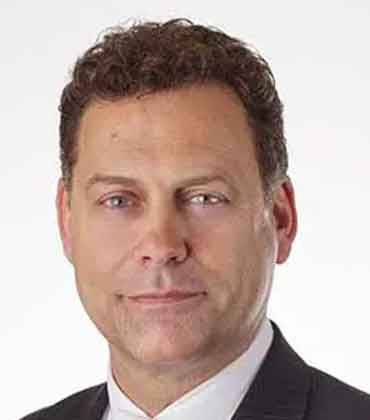THANK YOU FOR SUBSCRIBING
By Xavier Serres Escoda, CIO Danone Brazil & Digital Marketplace Product Group Leader Americas, Danone
The role of the CIO in Digital Transformation....
By Kim Miller, Director, Supply Chain Business Integration & Analytics, Boeing [NYSE:BA]
Leading The Supply Chain Through A Transformational Journey
By Tony He, Senior Director - Business Development, Franke Foodservice Systems Asia
What's In Your Ice?

A Proactive Risk Management Approach Guides Pg&E's Supplier Quality Assurance Team
Jamie Martin, Vice President of Supply Chain and Chief Procurement Officer, Pacific Gas and Electric Company

 Jamie Martin, Vice President of Supply Chain and Chief Procurement Officer, Pacific Gas and Electric Company
Jamie Martin, Vice President of Supply Chain and Chief Procurement Officer, Pacific Gas and Electric CompanyMost business professionals are familiar with the Project Management Triangle, which consists of quality, cost and time.
The basic premise is one has control only over two of them.
However, at Pacific Gas and Electric Company (PG&E), our Supplier Quality Assurance Department has redefined this long-standing paradigm.
When working with our more than 450 active material suppliers, SQA’s pro-active approach considers those three factors.
Of course, quality is the bottom line. We measure it, track it and check it. Cost is seen in savings because there’s less product failure, which means less rework and lower maintenance and replacement costs. Time is also seen as savings because there’s less work time lost due to replacing inferior product.
How do we belie this long-standing business axiom? Well, the success of the partnership with our suppliers comes from using technology that integrates various quality management systems:
• To measure incoming material quality, PG&E’s SQA measures Defective Parts Per Million (DPPM). This helped SQA drive the quality to 99.97 percent defect-free materials.
• To standardize qualification of suppliers and verify that product meets specifications, a Product Qualification Process (PPQP) was implemented.
• To verify a supplier’s Quality Management System (QMS), audits were performed per ISO9001-2015. Audit scores improved from an average of 70 percent in 2015 to 77 percent in 2019.
• To ensure that only approved products from qualified suppliers are approved for use, SQA established a Qualified Supplier List (QSL) as an integrated system in tracking supplier locations and approved materials.
• To track and manage changes with suppliers and products, the electronic Supplier Change Request (eSCR) system was implemented as an integrated change management solution. eSCR resulted in $8.5 million in material savings.
“Integrating technology solutions have helped to align better with our suppliers to increase efficiency and delivery of quality products”
• To meet regulatory requirements, a Materials Traceability system was developed as part of the online Supplier Portal. This portal allows suppliers to deliver associated test reports and datasheets for products purchased. As a result, PG&E experienced an added benefit of $4.6 million in material savings.
We’re focused on pro-active Quality Assurance (QA). We’ve introduced procedures such as the PPQP and the QMS audits. Integrating technology solutions have helped us align better with our suppliers to increase efficiency and delivery of quality products.
Two examples of enterprise technology implementation are in the eSCR and Materials Traceability program. Both are used to support the processing of supplier change requests and for suppliers to submit material datasheets.
PG&E’s Supplier Portal uses the HANA cloud-based technology platform to interface with suppliers. This allows suppliers to provide necessary information for teams to make evaluations that are automatically managed through the system. Enterprise level technology allows PG&E to process digitized information and reduce risk.
To quantify a supplier’s quality performance, information from DPPM, audits, corrective actions and historical data are compiled as weighted elements into a Quality Performance Rating (QPR) expression that provides a score per supplier.
Today, the benefits of these systems are shown in cost savings and with our major suppliers delivering a substantially improved defect-free product.
Quality. Cost. Time. PG&E’s SQA team has proven that you can have all three sides of the Iron Triangle when it comes to making sure you have product that helps to safely deliver energy to 16 million customers every day.
Read Also



![Kim Miller, Director, Supply Chain Business Integration & Analytics, Boeing [NYSE:BA] Leading The Supply Chain Through A Transformational Journey](https://www.fbtechreviewapac.com/newstransfer/upload/370x420_A20F.jpg)











